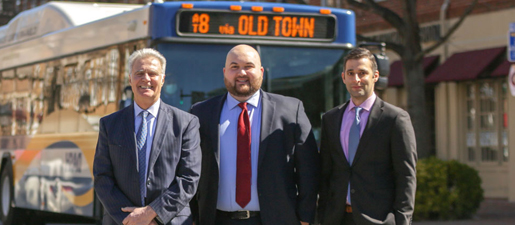As the plaintiff, the injured party must present their case-in-chief to the jury before the defendant’s case. In their case-in-chief, the plaintiff must prove liability and damages. That is, the plaintiff must first prove that the defendant was negligent in causing the plaintiff’s injuries. Then the plaintiff must prove the defendant’s negligent behavior caused every element of damages they are claiming. The plaintiff presents their case before the defendant offers any evidence. Even though the plaintiff goes first, successfully overcoming the defense’s case is paramount in obtaining a favorable plaintiff’s verdict from the jury.
The first step to overcoming the defense’s case is to forecast or anticipate the arguments that the defense will argue to the jury. The plaintiff has several tools at their disposal to ascertain what the defense will argue during their case. We have discussed those tools in prior blogs, but every allegation the plaintiff makes in their complaint, every interrogatory, every request for production of documents, every request for admission, the defendant’s expert designation and report, and pre-trial motions are all tools that the plaintiff can use to predict what the defense is going to argue to the jury.
Knowing the defense’s upcoming arguments is important in meeting the burden of proof. Since the plaintiff has the burden of proof, the plaintiff must prove their case by a preponderance of the evidence. The preponderance of the evidence, or the greater weight of the evidence, is the evidence that is more persuasive when evaluated against all of the evidence admitted in the case. The plaintiff needs to be ready to put on evidence that will be more persuasive than what the defendant will offer. Correctly anticipating the defense’s arguments is essential in combating the arguments before the defense presents them and for the plaintiff to ultimately present the more persuasive evidence.
The first tool to overcome the defense’s case is pre-trial motions. Pre-trial motions are used to obtain a court order that the defense may not make certain arguments or present specific evidence. For example, there is substantial case law that the defense may not argue the plaintiff has been malingering or faking/exaggerating their injuries. Obtaining an order from the Court barring this argument before trial is essential. The alternative, objecting at trial once the argument is made, still allows the jury to hear the argument even if they are instructed not to consider it afterward. Pre-trial motions are extremely important and can be used to combat the defense’s case before trial.
There are also several ways to overcome the defense’s case at trial. The most commonly contested liability personal injury case is the “he said-she said” case. When the plaintiff and defendant both have different versions of what happened, the best way to overcome the defense’s case is to present independent evidence. Independent evidence most commonly comes from an independent witness or a third party that witnessed the incident and has no interest in the result of the case. Other evidence that can overcome a defense’s case in contested liability cases is surveillance videos that recorded the subject incident or dashcam videos in motor vehicle collisions. Presenting independent evidence normally holds more weight with a jury than the plaintiff or defendants’ recollection of the incident because the parties to the lawsuit are not independent. They have an obvious stake in the outcome of the case. In cases where the defendant is contesting liability, if the plaintiff cannot overcome the defense’s case, the jury will find a defense verdict.
In situations where there is no independent evidence or limited independent evidence, the liability decision of the jury will typically rely on the credibility of both the defendant and the plaintiff. The jury will be instructed to assess the credibility of all witnesses, and confronting the defendant’s credibility is important in overcoming the defense’s case. Some ways of confronting the defendant’s credibility are pointing out the defendant’s interest in the outcome of the case (i.e., the defendant does not want to be found at fault), the defendant’s biases, any prior inconsistent statements the defendant has made (i.e., the defendant said two different things at their deposition and at trial), and the defendant’s behavior at the time of the incident (i.e., defendant using a cell phone at time of motor vehicle collision). Most of the time, in contested liability cases, overcoming the defense’s case will ultimately come down to the jury determining which party is more credible.
On the other hand, part of overcoming the defense’s case in “he said-she said” cases are proving the plaintiff’s credibility. Putting on evidence from the plaintiff that they knew the area where the subject incident happened well or that they were completing a daily routine when the subject incident occurred is important evidence that goes to the credibility of the plaintiff. Knowing your surroundings due to repetitive behavior can be extremely helpful in persuading a jury that the plaintiff’s version of events was correct.
Other common defenses in personal injury cases relate to the damages aspect of the case. The most common defense is that the subject incident did not cause the injury the plaintiff is claiming. In these cases, overcoming the defense’s case is important because the jury will award a small verdict if they find the defense’s case more persuasive. The first thing the defense normally does in contested damages cases is hire an expert. The defense will hire a doctor that focuses their practice on the body part that the plaintiff is claiming was injured in the subject incident and have that expert testify as to why the defendant’s negligence did not cause the injury. Defense experts will complete a record review (i.e., review all plaintiff’s medical records) and/or a defense medical examination (one meeting with the plaintiff) and then write a report including why the plaintiff’s claims are not related to the subject incident. To overcome this, the plaintiff first needs to have an expert of their own. The doctor that treated the plaintiff for their claimed injuries is always the best choice for the plaintiff’s expert.
In most of these contested damages cases, overcoming the defense’s case comes down to winning the battle of the experts. While these experts are almost always very qualified, bringing out the defense expert’s biases is essential in overcoming the defense’s case. Behind every defense expert is an insurance company that is paying that expert for their testimony. Many of these experts have a substantial history of being paid by the same insurance carrier. Bringing this evidence out and showing the jury that the defense expert is a “hired gun” may lead the jury to find the plaintiff’s expert more credible.
Other ways of contesting a defense expert’s opinion revolve around the expert’s knowledge of the plaintiff. If the expert only performed a record review, pointing out to the jury that on one side you have a doctor who read medical records and on the other side you have a doctor who met with the plaintiff several times and treated them as a patient can lead the jury to find the plaintiff’s expert more credible. If there is some record that the defense expert did not review during the record review, pointing that out can help create doubt in the defense expert’s opinion. In situations where a defense expert opines that the plaintiff had the claimed injury before the subject incident, putting on evidence from the plaintiff’s friends, family, and colleagues that the plaintiff never complained of pain in that body area before the subject incident can lead to a jury being skeptical of the defense experts claims.
There are many ways to overcome the defense’s case during a personal injury trial. At Curcio Law, we are experienced plaintiffs’ personal injury attorneys who know how to use the tools available to anticipate the defense’s arguments at trial. We know how to present evidence to overcome those arguments.

